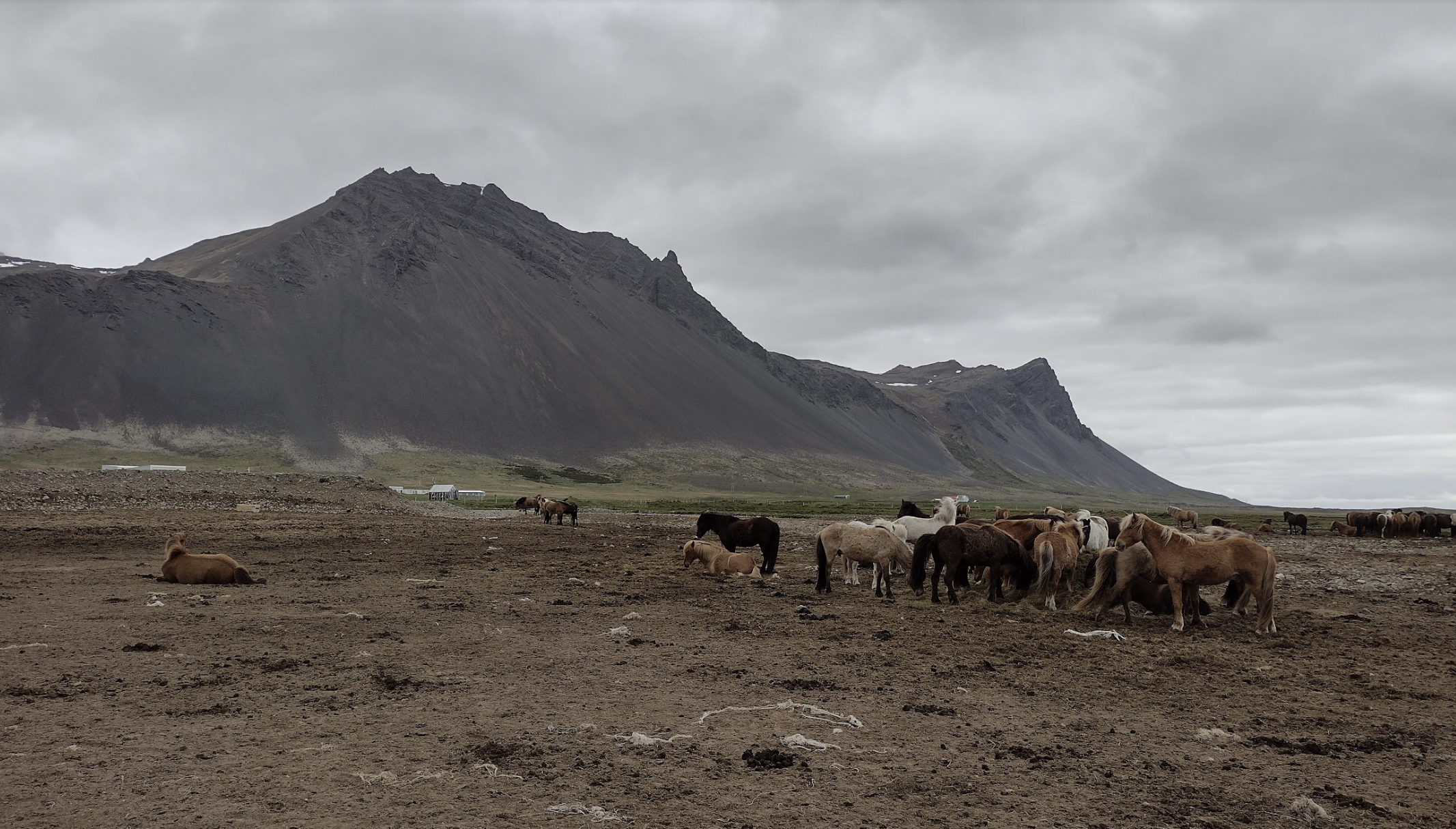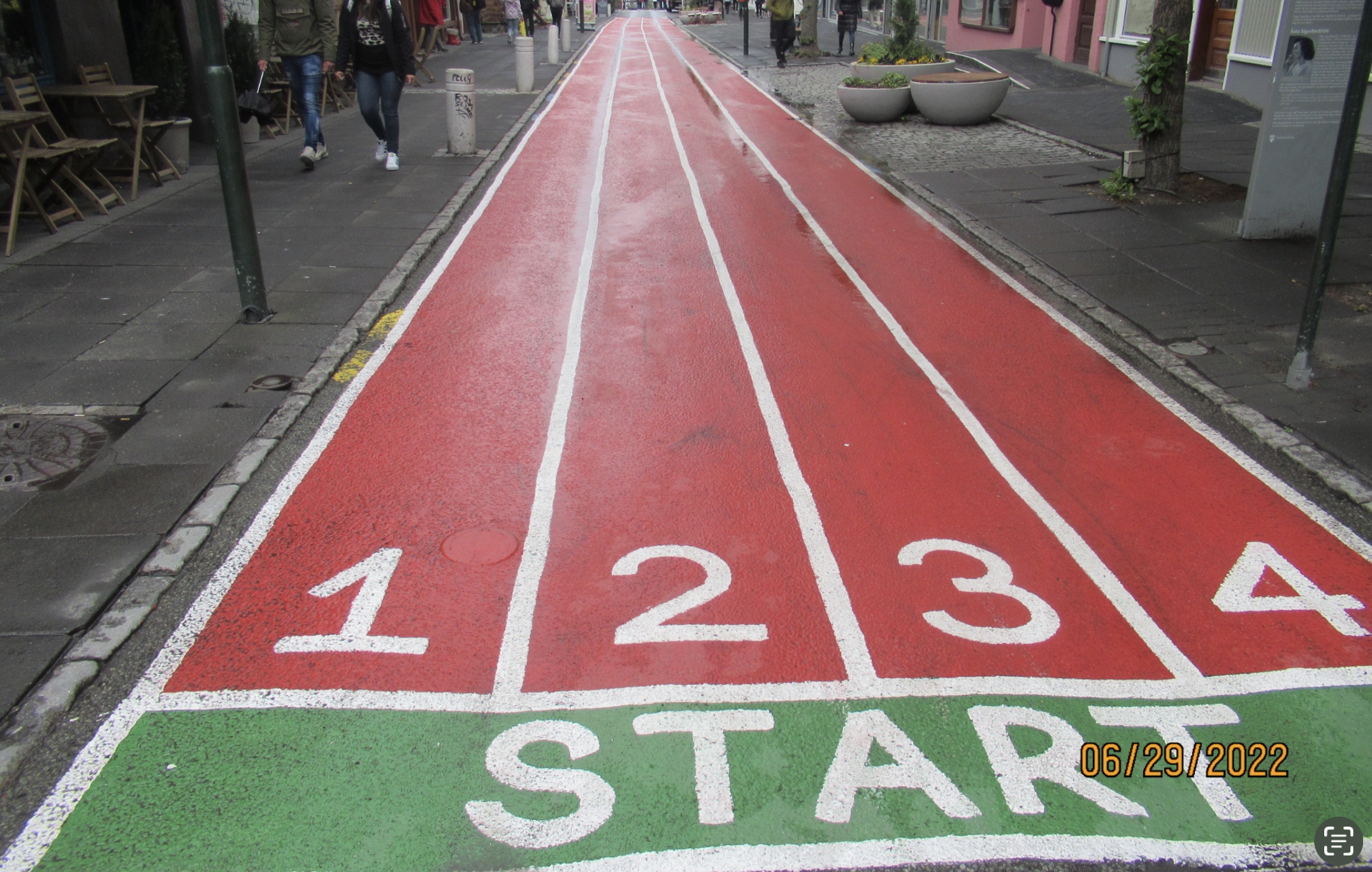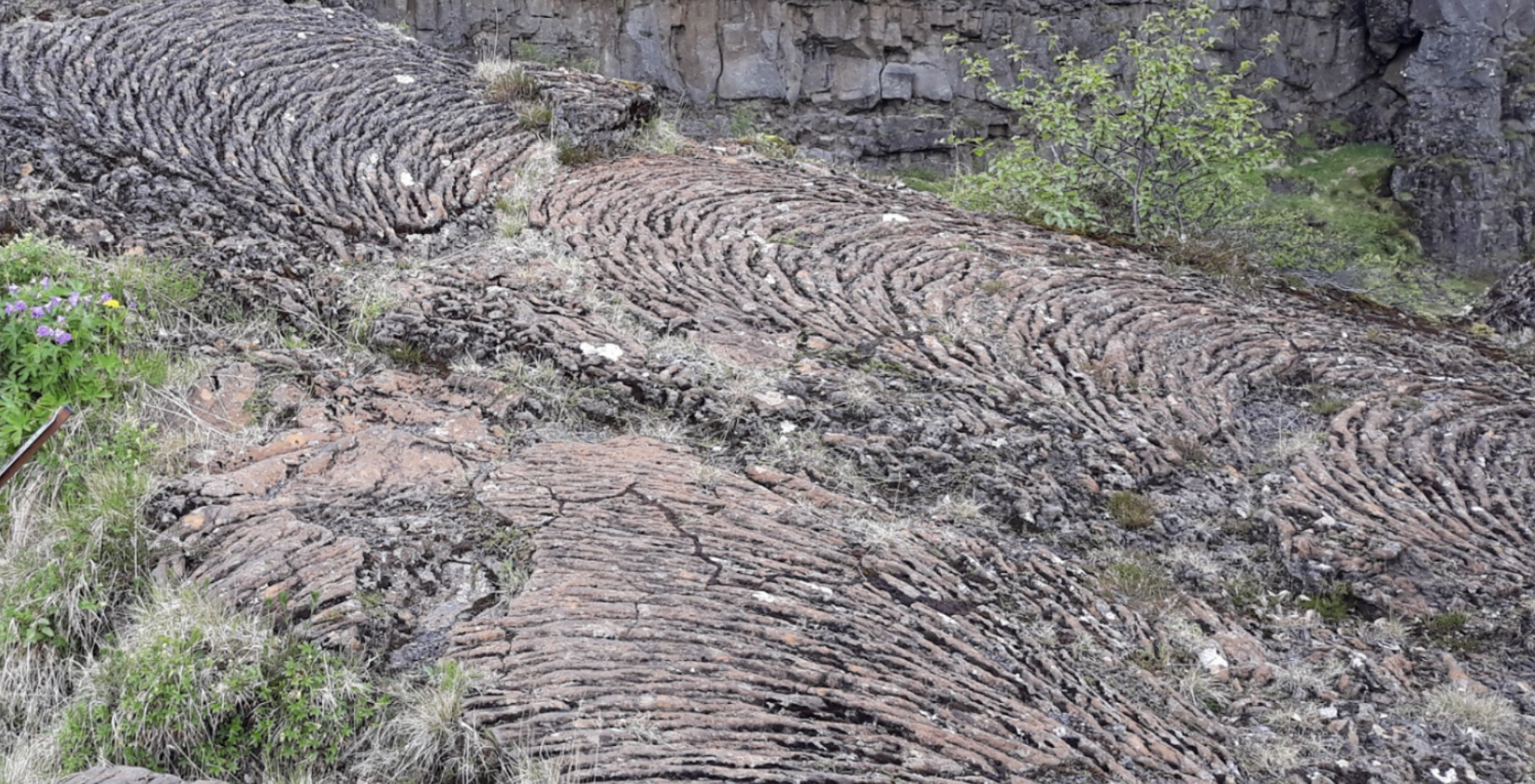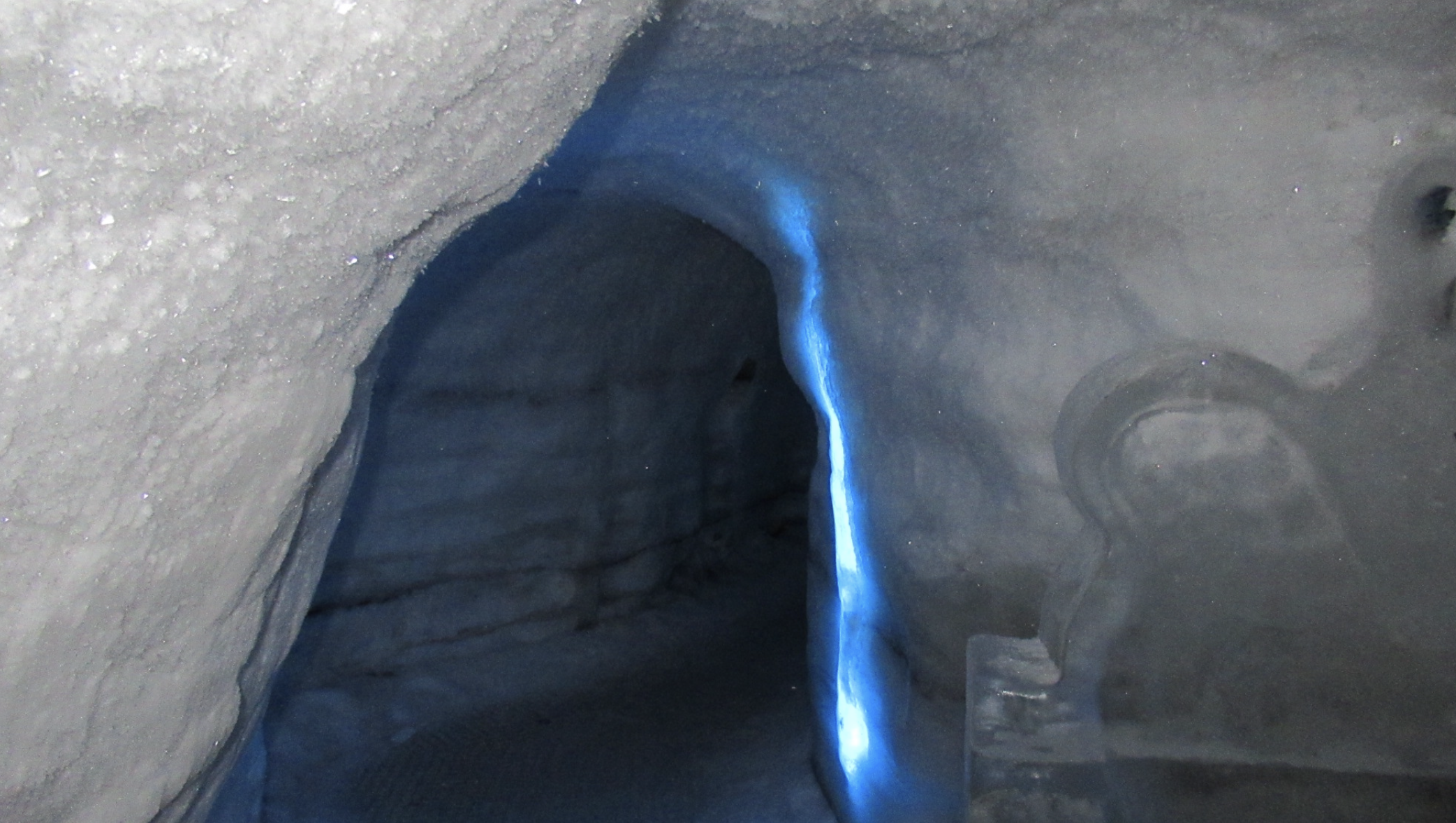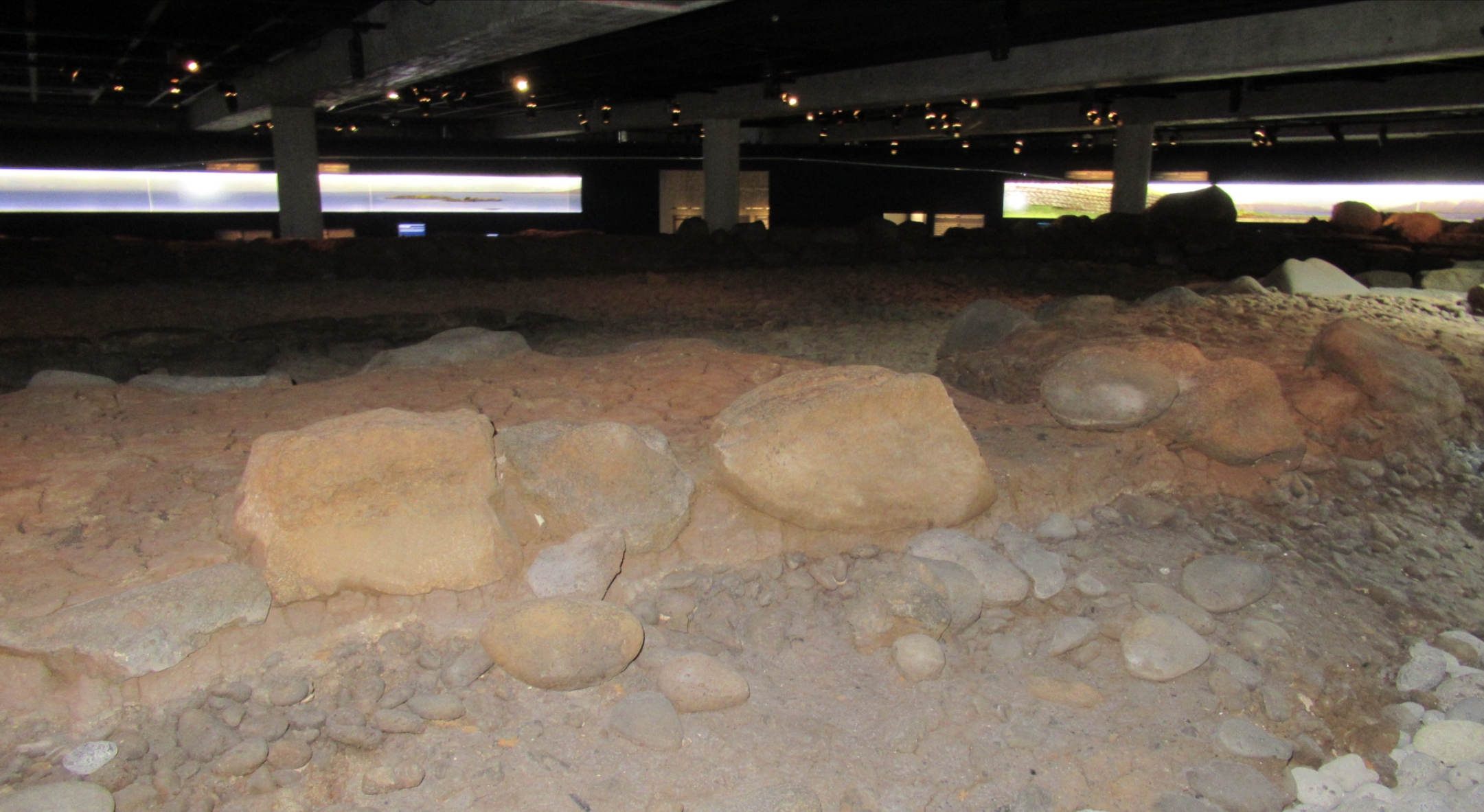Every time I take a trip to a foreign country, I tend to get tired of jostling with other tourists to see major sites, and try to flee, at least for a little while, to a less populated area. For our Iceland trip, after some discussion, we opted for a small group tour of Snæfellsnes Peninsula, which my guidebook informed me is relatively “quiet” and “unexplored” compared to other well-trod tourist destinations along the South Coast. Even so, the tour promised dramatic Icelandic scenery, and a view (on a clear day) of Snæfellsjökull Volcano, which Jules Verne identified in Journey to the Center of the Earth as the entry point to the underworld.
This day turned out to be my most memorable experience in Iceland, and probably my most memorable vacation experience for some time to come. We made six stops along the route, I got to see some amazing landscapes, and the tour guide passed the hours on the road by telling us fascinating Icelandic myths and stories, including one about Bárður, one of the legendary founders of Iceland:
Half human, half troll and frost-giant (so very strong), Bárður settled on the Snæfellsnes Peninsula with his wife and daughters in the 9th century. Unfortunately, one day, Bárður’s nephew pushed Bárður’s oldest daughter Helga out to sea on an iceberg, and she disappeared. (It turned out she drifted all the way to Greenland, but Bárður didn’t know that at the time) Furious, Bárður threw one of his nephews off a nearby cliff and another down a nearby ravine. (At this point in the story, the tour guide reached out the window and, with a serious, deadpan delivery that would accompany all of her stories, pointed to the exact cliff where the murder happened.) Bárður gave up his land holding, but stayed to wander the peninsula, and eventually became a guardian spirit for the people who lived there.
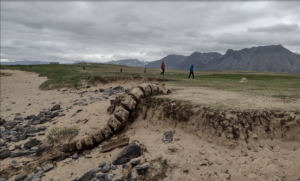
Our first stop was at a beach named Ytri Tunga, a stark, earth-toned beach (reddish brown seaweed, brown sand, black rocks) and, our guide explained, one of the most reliable places in Iceland to see seals. Sure enough, some Harbor seals were sunning themselves on the rocks when we arrived. We were told to keep quiet and keep our distance to avoid disturbing them, so we crept up, caught a few blurry pictures, then crept away. On the way back, we also passed the remains of a whale carcass that had washed up on the beach. Now just bones, one of the giant vertebrae held a small collection of rocks, which visitors added to over the months or years it lay there.
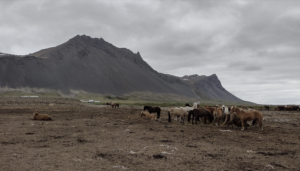
Our next stop was lunch at a working horse farm that also catered to tourists in several ways, with horseback rides, a guesthouse, and a restaurant stop for driving tours, like the one I was on. After a filling meat-and-potatoes lunch, we got to wander into the fields to meet some Icelandic horses. One friendly horse came right over to me, gave me some friendly head bunts, then sniffed at my pockets to see if I had brought any treats. The friendliest horse in Iceland, or at least the one most practiced in hustling tourists.
On our way to our next stop, the tour guide told us this story, which she claimed was told to her by Joanna, the woman who ran the horse farm:
Joanna grew up on that farm in the 1950s, and her parents and older siblings often left her at home when they went out to work with the horses, sometimes all day long. But Joanna was never alone – the huldufólk, the Hidden People, always kept her company. One day, she accidentally cut her finger on a knife. Joanna didn’t know what to do and started to cry, but the huldufólk washed, dried, and bandaged the cut for her before her family returned home.
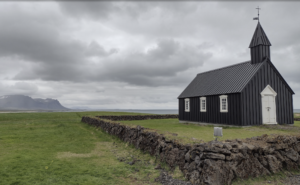
That brought us to Búðakirkja, ‘The Black Church of Búðir,’ a small, picturesque church in the middle of a field. We didn’t stop for very long, just to take a few pictures. The highlight of the stop was the church’s backstory:
Originally built in the 18th century, the church fell into disuse and was eventually torn down. But in the 1830s, a widow named Steinunn Sveinsdóttir appealed to the local church authorities to fund its reconstruction. For whatever reason, they denied her request, so she went above them and wrote directly to the Danish king, who authorized the construction. She arranged the construction and after it was built, she had this inscription (loosely translated) written on the door: ‘This church was erected by Steinunn Sveinsdóttir without any help from the holy fathers.”
From the Black Church, we went to Arnarstapi, a small fishing village right next to a seaside cliff. The cliffs had some fantastic rock formations and a walking trail alongside the sea. Our tour guide dropped us off at one end of the trail and told us to walk along the path. She would see us in a little while, she said, and in the meantime, “Bárður Snæfellsás will be your guide.” When we reached the end of the trail, we realized what she had meant – there was a big sculpture of Bárður Snæfellsás in a park at the end of the path.
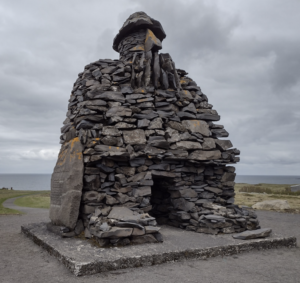
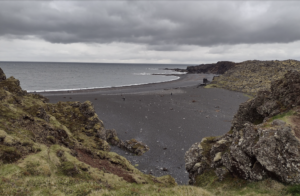
After meeting Bárður, we stopped at a black sand beach, Djúpalónssandur, at the foot of the Snæfellsjökull volcano. It was a cloudy day, so we couldn’t see the top of the peak that had impressed Jules Verne so much, but the beach was fascinating all by itself. The landscape for miles around was an eerie lava field – just black rocks and moss. There was some grass and even some tiny flowers overlooking the beach. On the beach itself were piles of old, rusted metal, the remains of a British ship that washed ashore after World War II. Huge rock formations jutted up at odd angles. These, the guide explained, were trolls that had gotten caught in daylight and frozen in place.
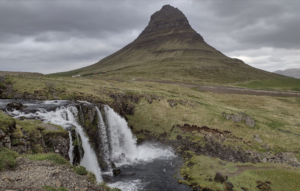
Driving around Snæfellsjökull, opposite the direction we came, we made our last stop of the day at Kirkjufell, a mountain so eye-catching that it was included in two Game of Thrones episodes. Our guide led us to a nearby waterfall, Kirkjufellsfoss, for photos. The combination of the waterfall and the mountain in the photos was truly stunning.
It was a long drive back, and I was starving by the time we got back to Reykjavik, but I was excited to be able to share everything I saw with Mom, and now also with her blog’s readers.
